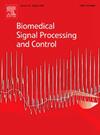心电图交替作为心脏转复除颤器植入的附加标准在心脏性猝死一级预防中的作用
IF 4.9
2区 医学
Q1 ENGINEERING, BIOMEDICAL
引用次数: 0
摘要
目前的指南推荐植入式心律转复除颤器(ICD)用于左心室射血分数(LVEF)降低时心脏性猝死(SCD)的一级预防。但LVEF作为风险指标缺乏敏感性和特异性,需要增加风险指标。心电图交替(Electrocardiographic alternans, ECGA)是每隔一拍的心电图形态振荡:p波/QRS-complex/ t波交替(分别为PWA/QRSA/TWA)。本研究旨在探讨ECGA作为决定ICD植入术对SCD一级预防的附加标准。心电图是在自行车测力仪测试中获得的,在心力衰竭人群中有icd用于一级预防。在随访期间,患者被分为病例(如果使用器械治疗)和对照组(如果没有使用器械治疗)。采用增强自适应匹配滤波方法(EAMFM)对静息和运动心电图进行识别。与运动条件不同,静息条件下PWA和QRSA在病例和对照组之间的差异具有统计学意义。因此,为了对它们进行分类,使用休息相关的ECGA特征馈送支持向量机(SVM),并通过留一交叉验证算法进行验证。SVM的敏感性为98.49%,特异性为83.33%,F1评分为95.61%。这些结果表明,eamfm衍生的ECGA可以作为心律失常风险分层的进一步有用特征,克服仅LVEF的敏感性和特异性不足。因此,本研究的主要贡献是提出了一个额外的基于ecga的标准,用于识别可能受益于一级预防ICD植入的患者,为当前指南的修订铺平了道路。本文章由计算机程序翻译,如有差异,请以英文原文为准。
Electrocardiographic alternans as an additional criterion for cardioverter defibrillator implantation in primary prevention of sudden cardiac death
The current Guidelines recommend implantable cardioverter defibrillator (ICD) for primary prevention of sudden cardiac death (SCD) when left ventricular ejection fraction (LVEF) is reduced. Nevertheless, LVEF lacks sensitivity and specificity as a risk index, meaning that additional risk indexes are needed. Electrocardiographic alternans (ECGA) is the every-other-beat morphology oscillation in either ECG wave: P-wave/QRS-complex/T-wave alternans (PWA/QRSA/TWA, respectively). This study aims to investigate ECGA as an additional criterion to decide for ICD implantation for primary prevention of SCD.
ECGs were acquired during a bicycle-ergometer test in a heart-failure population having ICDs for primary prevention. During follow-up, patients were classified into cases, if device therapy was administered, and controls, if no device therapy occurred. Resting and exercise ECGs were analyzed using the enhanced adaptive matched filter method (EAMFM) to identify ECGA.
Unlike the exercise condition, the resting condition showed a statistically significant difference in PWA and QRSA between cases and controls. Thus, to classify them, rest-related ECGA features were used to feed a support vector machine (SVM), validated by a leave-one-out cross-validation algorithm. SVM yielded a sensitivity, specificity, and F1 score of 98.49%, 83.33%, and 95.61%, respectively. These results suggest that EAMFM-derived ECGA may act as a further useful feature to stratify the arrhythmia risk, overcoming the insufficient sensitivity and specificity of LVEF only. Thus, the main contribution of this study is the proposal of an additional ECGA-based criterion for identifying patients who may benefit from primary prevention ICD implantation paving the way for a conceivable revision of the current Guidelines.
求助全文
通过发布文献求助,成功后即可免费获取论文全文。
去求助
来源期刊

Biomedical Signal Processing and Control
工程技术-工程:生物医学
CiteScore
9.80
自引率
13.70%
发文量
822
审稿时长
4 months
期刊介绍:
Biomedical Signal Processing and Control aims to provide a cross-disciplinary international forum for the interchange of information on research in the measurement and analysis of signals and images in clinical medicine and the biological sciences. Emphasis is placed on contributions dealing with the practical, applications-led research on the use of methods and devices in clinical diagnosis, patient monitoring and management.
Biomedical Signal Processing and Control reflects the main areas in which these methods are being used and developed at the interface of both engineering and clinical science. The scope of the journal is defined to include relevant review papers, technical notes, short communications and letters. Tutorial papers and special issues will also be published.
 求助内容:
求助内容: 应助结果提醒方式:
应助结果提醒方式:


